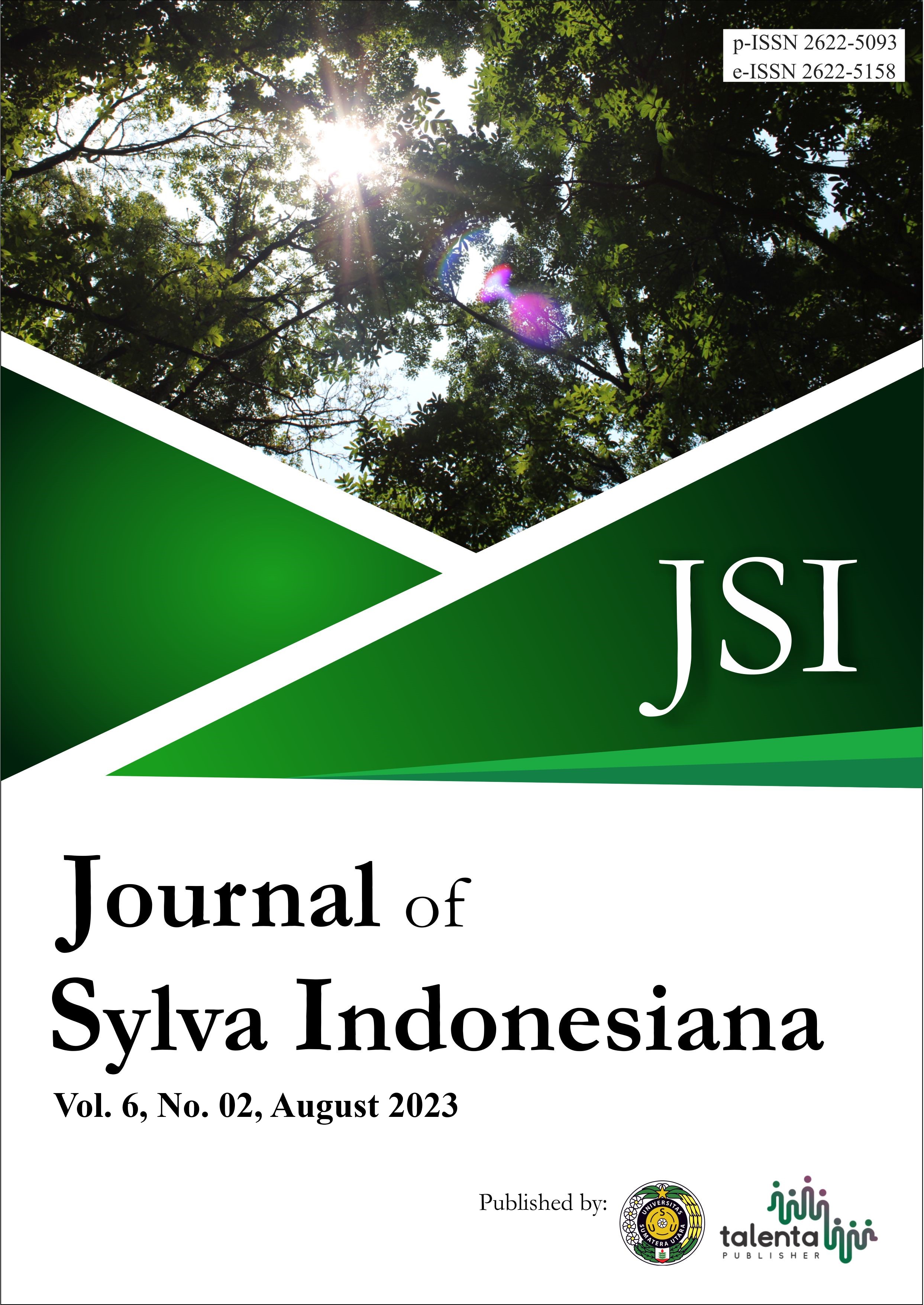Identification of Vegetation on 3 Types of Post-Operation Land in Oil and Gas Mining, Riau Province
DOI:
https://doi.org/10.32734/jsi.v6i02.10526Keywords:
Environmental Impact Analysis, Ex-borrow, Ex-wellpad, Pit, Post-operation, RevegetationAbstract
PT. Pertamina Hulu Rokan (PHR) is conducting activities to restore unproductive lands by revegetating in 3 types of areas. They are (1) areas of ex-well pad facilities where well plug & abandon (P&A) activities have been carried out, including the dismantling of related surface facilities, (2) areas of ex-production facilities that have been dismantled and (3) areas of ex-borrow pits. This research was conducted in PHR’s post-operation land area in 5 revegetation sites representing three types of post-operation areas, in Riau Province. The purpose of this study is to identify the types of vegetation found on post-operation land of oil and gas mining and to determine the types of vegetation that grow well on post-operation land based on the revegetation achievement target in each post-operation location in the document of Environmental Impact Analysis. Field research was conducted through the observation method. Observations were made by observing the type of plant, plant height, and plant mortality rate. The results showed that there were ten species of plants found in the 3 types of post-operation land in PHR, namely Cempedak (Artocarpus integer), Durian (Durio zibethinus), Jelutung (Dyera lowii), Jengkol (Pithecellobium jiringa), Mahoni (Swietenia macrophylla), Mangga (Mangifera indica), Matoa (Pometia pinnata), Medang (Litsea sp), Petai (Parkia speciosa), and Pulai (Alstonia scholaris). In total, the percentage of living plants was 88.2%. Furthermore, the average plant height in the five post-operation land areas was 169.8 cm. These values also indicate that the percentage of living plants and the height average of each type of plant in location is categorized as good, according to the achievement of the revegetation target in the document of Environmental Impact Analysis
Downloads
References
Indonesia. ESDM, Kementerian Energi dan Sumberdaya Mineral Republik Indonesia, Peraturan Menteri ESDM No. 15 Tentang Kegiatan Pasca Operasi Pada Kegiatan Usahan Hulu Minyak dan Gas Bumi, Jakarta: Kementerian Energi dan Sumberdaya Mineral Republik Indonesia; 2018.[2]R. Widiyatmoko, B. Wasis, and L. B. Prasetyo, “Analisis Pertumbuhan Tanaman Revegetasi Di Lahan Bekas Tambang Silika Holcim Educational Forest (Hef) Cibadak, Sukabumi,” JournalNaturalResource andEnvironmentalManagement,vol. 7, no. 1, pp. 79–88, 2017.[3]K. G. Lestari, S. W. Budi, and D. T. Suryaningtyas, “The impact of revegetation activities in various post-mining lands in Indonesia (study of literature),” in IOPConf. Ser. Earth Environ. Sci,vol. 959, no. 1.2022.[4]O. Rusdiana and D. A. Setiadi, “The Evaluation of the Success of Plant Revegetation in Post Coal Mining Block M1W PT Jorong BarutamaGreston, South Kalimantan,” Jurnal Silvikultur Tropika, vol. 10, no.3, pp. 125-132.2019.[5]S. Hadi, Metodologi Research, Andi Offset,Yogyakarta,1993.[6]W. Gulo and Y. Hardiwati, Metodologi Penelitian,Grasindo, Jakarta, 2022.[7]R. D. N. Setyowati, N. A. Amala, and N. N. U. Aini, “Studi Pemilihan Tanaman Revegetasi Untuk Keberhasilan ReklamasiLahan Bekas Tambang,” Al-Ard JurnalTeknikLingkungan,vol. 3, no. 1, pp. 14-20, 2018.[8]Pratiwi, B. H. Narendra, C. A. Siregar, M. Turjaman, A. Hidayat, H. H. Rachmat, B. Mulyanto, Suwardi, Iskandar, R. Maharani, Y. Rayadin, R. Prayudyaningsih, T. W.Yuwati, R. Prematuri, A. Susilowati, “Managing and reforesting degraded post-mining landscape in Indonesia: A review,” Land, vol. 10, no. 6, 2021.[9]A. Lubis, Suwondo, and R. Haryanto, “Laporan akhir Kuasa Swakelola Jasa-Jasa Professional Dari Universitas Lokal Untuk Program AMDAL Revegetasi Di Area Operasi SMO No. C1792536,” Pekanbaru, 2021.

Downloads
Published
How to Cite
Issue
Section
License

This work is licensed under a Creative Commons Attribution-NonCommercial 4.0 International License.


















